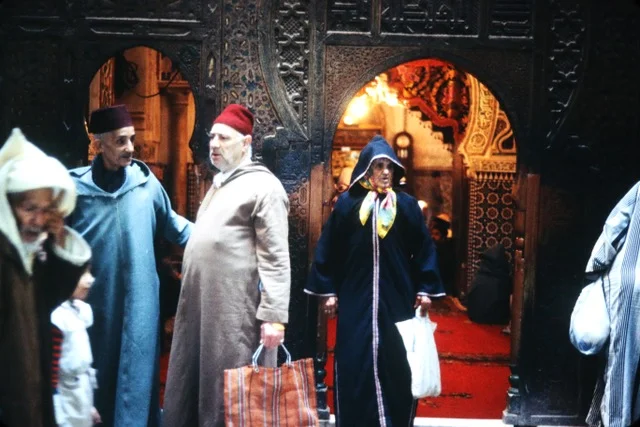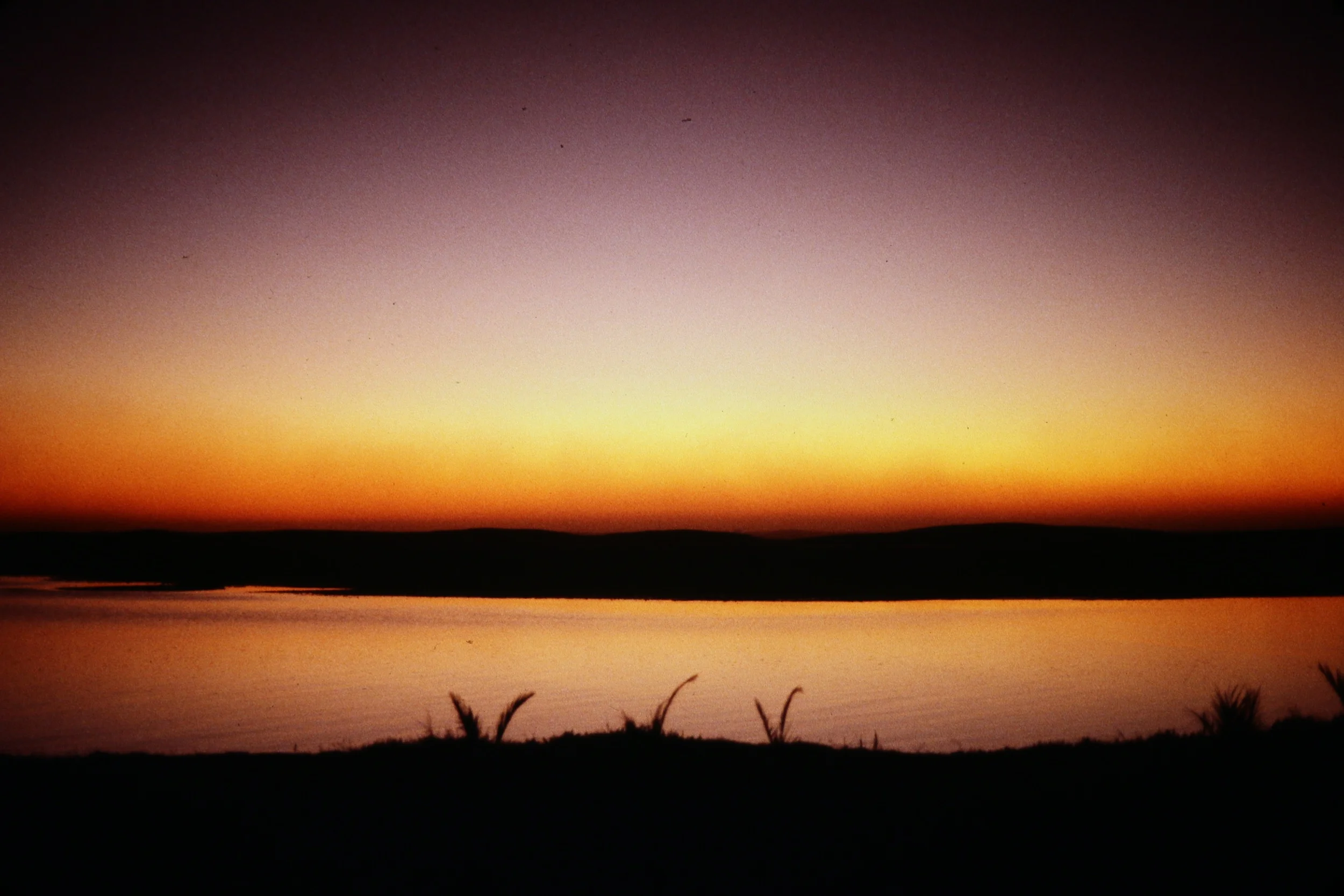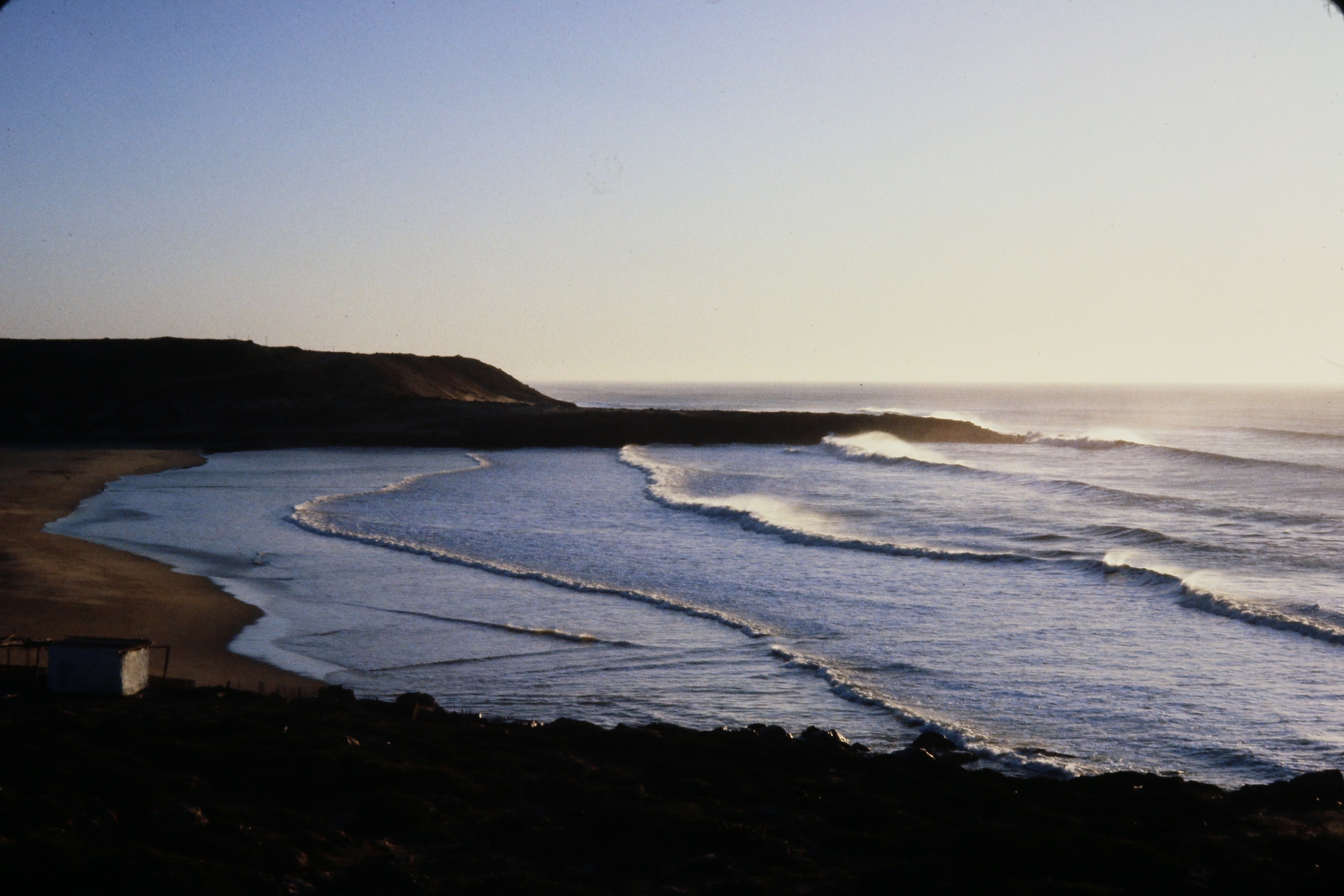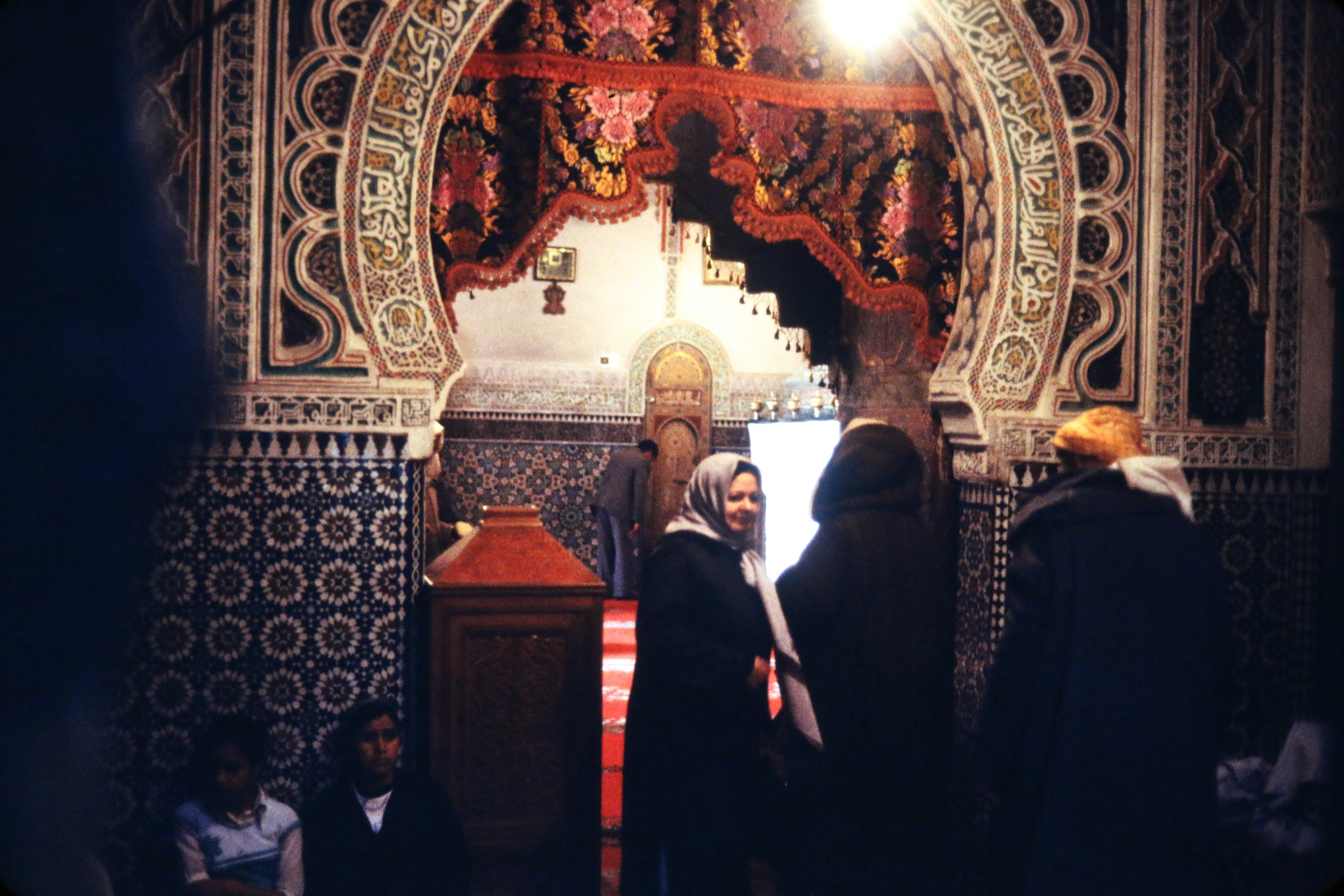Morocco 1983
This story, about our trip to Morocco in 1983, was written in April, 2018.
On our first trip to Europe, in 1983, we were traveling through Spain and Portugal and learned that the city of Algeciras, Spain was only a two-hour ferry ride across the Strait of Gibraltar to Tangier. We decided we’d take a side trip and spend four days in Morocco.
After a windy and bumpy ride across the Strait, we landed in Tangier, the first time we had visited an Arabic country. We quickly found a small hotel near the port, settled in, and set out to explore the sights of Tangier. The city had a decidedly different feel than any European cities we had visited. A touch of reality was the front door of the hotel being barred shut with two by fours and sailors guarding the entrance with AK-47’s.
The person we periodically used at home to tune our piano was a Morocco aficionado, and he had a personalized license plate that read: MORCO. He told us stories of his times there which sparked our interest and eventually led to this visit.
On our first night in Tangier, out of curiosity, we turned on the television. What we saw and heard was 24 hour non-stop broadcasting of the Koran, in Arabic of course. We thought that was the ultimate in boring TV but later learned some official had just died and this broadcast was apparently a memorial.
We rented a beat-up Renault in Tangier and headed southeast to Fes, a distance of about 150 miles through desert country, which took us about three hours. In Fes we booked rooms at the Mercure Hotel, very inexpensive and it had a rooftop restaurant with a sliding roof that opened to the starlit night sky. The hotel was on a bluff overlooking the ancient medina, and at night we could smell the fires and hear sounds from the braying donkeys.
Our main reason for going to Fes was to visit the famous Fes medina, also called Fes el-Bali, a magical, mystical and very smelly, labyrinth of buildings, shops and tiny corridors dating back to the ninth century. We were told it was important that we went into the medina with a guide, since it was impossible to find your way in or out. That might have been an exaggeration, but after hours of twisting and turning through the narrow paths, we were glad we had our guide.
The day we arrived at the hotel, several guides approached us to offer their services. We said it was late and we’d decide on a guide in the morning, and sure enough early in the morning two men were standing at the hotel gate waiting for us. They got into a serious dispute over who would be our guide and the tall guy edged the other one out. We didn’t especially like the way that happened but we needed a guide so we engaged him.
We walked for several hours along the tiny goat paths, used only by people and donkeys, no vehicles or bicycles. The walk took us back a thousand years in time, with the sights and sounds of the Arabian nights. We marveled at the little shops selling perfumes, silks, copper, leather goods and jewelry, all at reasonable prices and always subject to the Arabic custom of haggling over price. This was in 1983, years before the world’s travel agents learned about the wonders of Morocco, before there were many tourists to drive up prices.
Of special interest was the tannery, or leather bazaar (souq), which had the most god-awful smell as you approached it. The tannery consists of numerous large stone vessels, filled with dyes and other liquids, which are used to process the hides of cows, sheep, goats and camels. The hides are first soaked in a mixture of cow urine, quicklime, water and salt which helps to break down the tough leather. Pigeon poop, which contains ammonia, is used as a softening agent to make the hides more malleable. Workers stand waist deep in the dyes, using their bare feet to knead the hides to achieve the desired softness. This is a process that hasn’t changed since medieval times, turning out high quality leather coats, handbags and shoes. An amazing place to visit and one you won’t easily forget, especially the smell.
We toured the medina in the morning, to avoid the intense afternoon Moroccan sun. After leaving the medina, our guide suggested we come to his house for some mint tea. Moroccan tea is a big deal and is always a bit of a ceremony. It’s mint tea sweetened with lots of sugar, and always served boiling hot. The teapot is lifted high above the cup while pouring and supposedly this aerates the tea. It’s amazing that they always get the tea in the cup and don’t spill it all over the place.
The guide wore what is typical Moroccan dress, a gelaba, also spelled jelaba, which is a simple caftan that covers the entire body down to the feet, and is hooded. It’s usually of a heavier material than the dishdasha which is a long and usually white robe traditionally worn by men in the Middle East (think shiek). Misti and I both bought gelabas to take home and we have them to this day.
His house was decorated with intricate plaster floral and geometric wall carvings, a design feature which can be found in many houses and public buildings throughout Morocco. The material is called Tadelakt lime plaster and is actually a lime stucco and not a plaster. Stencils are used to mark the design on the wall, or ceiling, the stucco is applied and when it hardens the craftsman cuts out the design using a chisel. The craftsman is called a Maalem.
But the surprise of the afternoon was when our guide lit a hashish pipe and asked if we would like to join him. I guess he felt we were cool Californians that wouldn’t be shocked by this; we weren’t shocked and we did join him. At the time, David was sixteen and Mike thirteen, and living in Marin they had both been exposed to plenty of “smoking,” but the hash was a bit exotic.
After two nights in Fes we drove back to Tangier, spent another night there, took the ferry back to Algeciras and resumed our trip through Spain and Portugal.
Art Faibisch, April, 2018
























